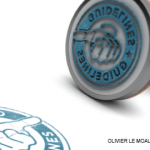 “Doctor, I hate to tell you this but that shelf is definitely not made of wood,” my patient gently chided me as I knocked on a plastic piece of shelving.
“Doctor, I hate to tell you this but that shelf is definitely not made of wood,” my patient gently chided me as I knocked on a plastic piece of shelving.
“I know … but you get the point,” I replied with a small laugh.
It’s become a habit of mine over the past few years to knock on wood, or whatever else is within reach, after having nuanced conversations with patients.
Looking back, I must have inadvertently picked it up from a mentor or a colleague, but no matter how this quirk entered my everyday routine, the fact that it persists suggests there is some value and meaning to this otherwise throwaway gesture. In fact, the more I think about it, the more I see these types of superstitions, rituals and mythologies as integral to the practice of rheumatology. What do I mean? Let’s rheuminate!
The Mythic Mind
Superstitions and mythology are integral to the human experience. Even though we associate them with folklore or pseudoscience, both are, at their core, systems to organize knowledge and meaning.1 Mythology attempts to explain uncertainty within complex phenomena, and superstitions aim to exert some degree of control over the inherently uncontrollable. Together, they help entire societies make sense of complex, and often contradictory, realities.2 Even when there is no empiric justification of behaviors, they have significant psychological resonance and, thus, carry meaning in and of themselves.3
In medicine, we are taught to prize objectivity and discard superstition as antithetical to science. Yet this is a misleading dichotomy. Even our most rigorous scientific theories rest on a scaffolding of metaphors, narratives and deeply held beliefs.
As anyone who has written a scientific article may be aware, if you go through citations and see where the evidence originated, chances are you will find the genesis of many of our immunological paradigms within moldy, century-old manuscripts with questionable methodologies. Yet we accept these ancient assertions as truths.
This isn’t to throw shade at our scientific methods. Rather, it’s to show the vital role of myth making and superstitions. After all, superstitions aren’t just artifacts of outdated worldviews; they are practical tools for navigating uncertainty. They fill the spaces between what we know, what we fear, what we predict and what we cannot control. For clinicians dealing with diseases as enigmatic as lupus or vasculitis, it’s only natural that we, too, reach for something—in this case, wooden objects—as we grasp for certainty.


